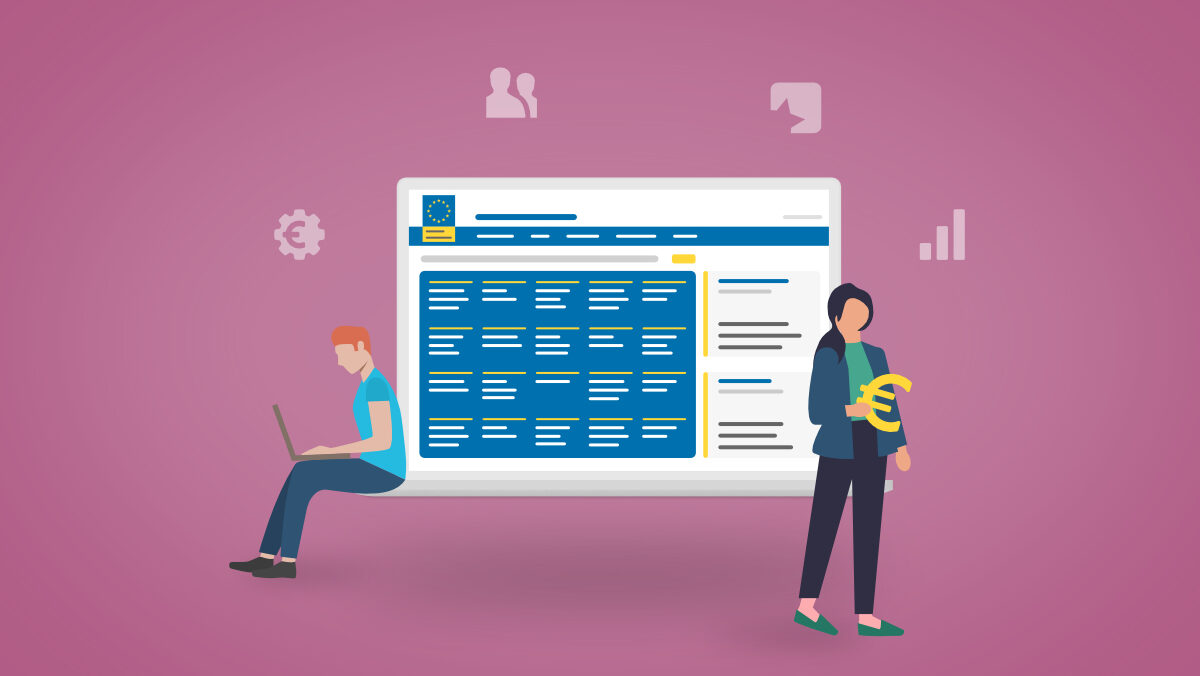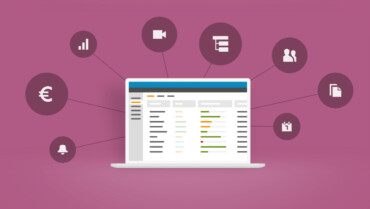For both newcomers and faltering veterans, understanding the workings of the EU funding machinery is as crucial as having the science down cold. This is not about seeing the legislative process or governing structure of the European Commission but how the call topics and content are generated all the way down from the top. Simply put, the expected effects of 95.5 billion EURs allocated by Horizon Europe are already settled upon and recorded in various sources, regardless of the subject that the researchers choose to submit.
Therefore, it won’t matter whether you are developing an anti-corrosion nanomaterial for a wind turbine or processing genomics data for personal treatment or trying to understand the shortcomings of deliberative democracy: for each respective field, the effects of what you do are already set and documented ahead. The researchers don’t need to create them from scratch as they do the scientific excellence part. What they need to do is to formulate a logical framework which ties their project objectives to those fixed effects.
1. Understand impact first
Those effects, which are the scientific, commercial, and societal consequences of the EU funded projects, are called IMPACTS. For some time, it may be a good idea to suspend all the technical weighing of the proposal, hang back and do a small exercise as to what impact your project will have in the medium and long term. What is its influence on broader terms? Can you devise a statement which encloses all the measurable targets you want to achieve, a sort of a general phrase?
Drawing an analogy from sports, we may use workouts and goals of a typical athlete to illustrate this process. As a 100 meter-dash track runner, she may want to break the record by 0.15 seconds or clock in somewhere more moderate, depending on her capacity and background. This measurable mark could be her objective. All the drills, training, and preparatory sprints with their specific targets, namely the tasks, could lead to her outputs or results. But none of these are what we call IMPACTS though the IMPACT could enclose them all. The IMPACT could be her increased competitiveness as an athlete, improved global profile of the country she represents, inclusion of female players or boosted broadcast revenues.
What if she fails or misses her mark by a significant margin? Then, it might have reasonably adverse or at best neutral effects. Therefore, negative IMPACTS are possible and should be considered as well.
Drawing on the athlete metaphor, a similar exercise with their own proposed actions could condition the researchers to spot and incorporate the relevant IMPACTS. Again, all the IMPACTS are predefined in several sources, and you must track them down. In a way, the European Commission is hunting for projects which will deliver those prescribed IMPACTS.
Expert tip:
- Reserve a small logbook for proposal preparation. Check out Strategic Plan 2025-2027 Analysis, most current Strategic Plan 2021-2024, and the Work Plan 2023-2024. The latter two have dedicated sections and groupings for IMPACTS. Both derive from the Analysis. You should still examine the current Strategic Plan and Work Plan even though they are based on the previous 21–24 Analysis. You will see that the IMPACTS under Destinations of Work Plan are directly taken from the Strategic Plan. Try to understand the way IMPACTS are generated from Strategic Orientations in Strategic Plan and passed down to Destinations and calls. This will be your methodology when it comes to analyse both Strategic and Work Plan of 2025-2027 which are not out yet.
- Take your time and read Strategic Plan 2025-2027 Analysis thoughtfully. Remembering the athlete metaphor and your proposal idea, highlight the parts of the text which addresses the effects or THE IMPACTS your project might have. It doesn’t matter how vague or immature your idea is. If it’s about novel drug design, focus more on health and AI related sections.
- Write down all the IMPACTS you derived from these 3 sources and communicate them to your team. Again, you will have to wait for Strategic and Work plan 2025-2027 but the Analysis will remain as the parent document and invaluable foundation for your proposal.
2. Predict the crucial elements that set the stage
What’s the right time to start preparations once you detect a call of interest? How long does it take before you put together an eligible proposal for Horizon Europe? Most of the researchers recognise a call just a few months shortly before the deadline or ideally when the biennial call sets are published within the new Work Programme. Even so, certain calls may be more demanding, making it necessary to prioritize future years over more favourable ones.
The Strategic Plan 2025-2027 Analysis is also useful in predicting what’s coming next regarding a call content. Even if the Strategic Plan and Work Plan are compact versions of it, the editing process inadvertently removes a substantial portion of valuable information from the Analysis, rendering some critical text absent from the Strategic Plan. It wouldn’t be wrong to say that Strategic Plan is an inferior derivative of the Analysis.
Expert tip:
- Open Strategic Plan 2025-2027 Analysis and go over these three sections in particular:
- 1.4. Future trends, disruptions, challenges, and opportunities: foresight for the Horizon Europe Strategic Plan 2025–2027
- 3. Possible new research needs and potentials arising from the global challenges
- 4.4. Gap analysis by cluster of Horizon Europe
- Draw a summary and put it in your logbook. Pick the clues of call topics and to some extent, call contents, which will be published around 2025 and onwards. Compare them with your project idea. Do you see a match? If your idea aligns with the leads in Analysis, you have the proof for action. In other words, you are well-placed to go for a Horizon Europe proposal and start at least 2 years ahead. Don’t get daunted by the length of the Analysis (187 pages). Read the entire document if possible. It will be around for a long time before the new Strategic Plan is drawn and, in the meantime, will provide you with enough clues for planning a collaborative project.
3. Identify the key actions (RIA & IA)
Once you get an overall picture of topics coming between 2025-2027, it could be a good idea to predict call actions as well. Some gaps identified in EU projects (4.4 Gap Analysis), which will provide the basis for future challenges, can either suggest low TRL-early research or actions tilted more towards deployment. Depending on your profile, you may choose topics with major research components or up-scaling with demonstrators. In Horizon Europe terminology, the former action is called RIA (Research and Innovation) and the latter IA (Innovation). These two types of actions not only dictate the characteristics of the consortia but also tell whether you should aim for a particular call in the first place.
4. Blend and cultivate from various disciplines
As soon as you match your idea with the future topics of the Analysis, it’s time to work it out with all its interdisciplinary tie-ins. As an active researcher, you should know the other practitioners in the supporting subjects. You can set up casual meetings with those from your institution or attend events where the leading experts come together. Again, this is primarily to present solutions to the issues laid out by the Analysis and address the IMPACTS.
Expert tip: Revisit the 3 sections of the 2025-2027 Analysis and try to transform the relevant parts of the text to the following questions. Also engage your potential collaborators by soliciting their expert opinions on these questions. What do you think can be done to address the challenges you picked? Who should you call in when your experience alone is not enough? There should be other research groups who may be up to the challenge. Did they make progress or grind it out against a persistent setback? Could this be classified as a notable setback similar to those outlined in the Gap Analysis? If there seems to be a solution around, how mature is it in terms of technology? Write the answers down to your logbook. Based on your notes, try to come up with your own unique solution which supersedes the available efforts. Validate your findings with a more traditional review of the literature and innovation landscape.
5. Build a well-rounded consortium
It’s not unusual for proposers to be excited in putting together research teams. Yet, crafting a successful Horizon Europe proposal demands a broader understanding and strategic approach. If a strong scientific component is crucial for success, researchers shouldn’t lose sight of the scaling process and commercialisation. A reckless and short-sighted researcher, despite their outstanding technical proficiency, may organize a weak or at worst, a downright deficient consortium.
Expert tip: Try to think about your idea or concept in the form of a tangible product, ready for use. Map out the value chain of your product. Every player along the value chain are potential partners in your project, even if they don’t have scientific contributions. Your objective may be only a lab-scale prototype but ask them to help you with a rough business plan just the same.
This expert article is written by Hakan Öztan, a senior grant advisor.









